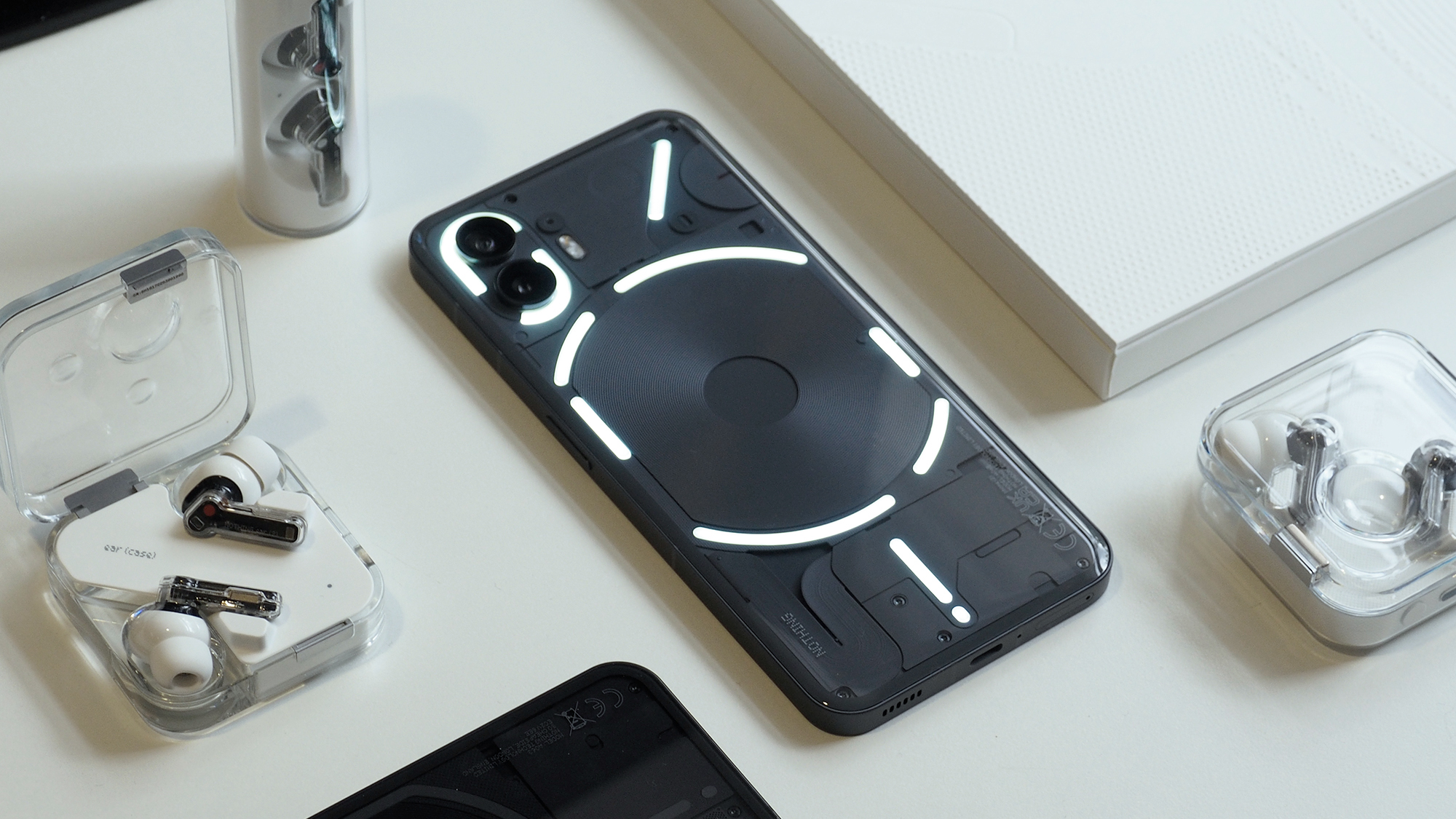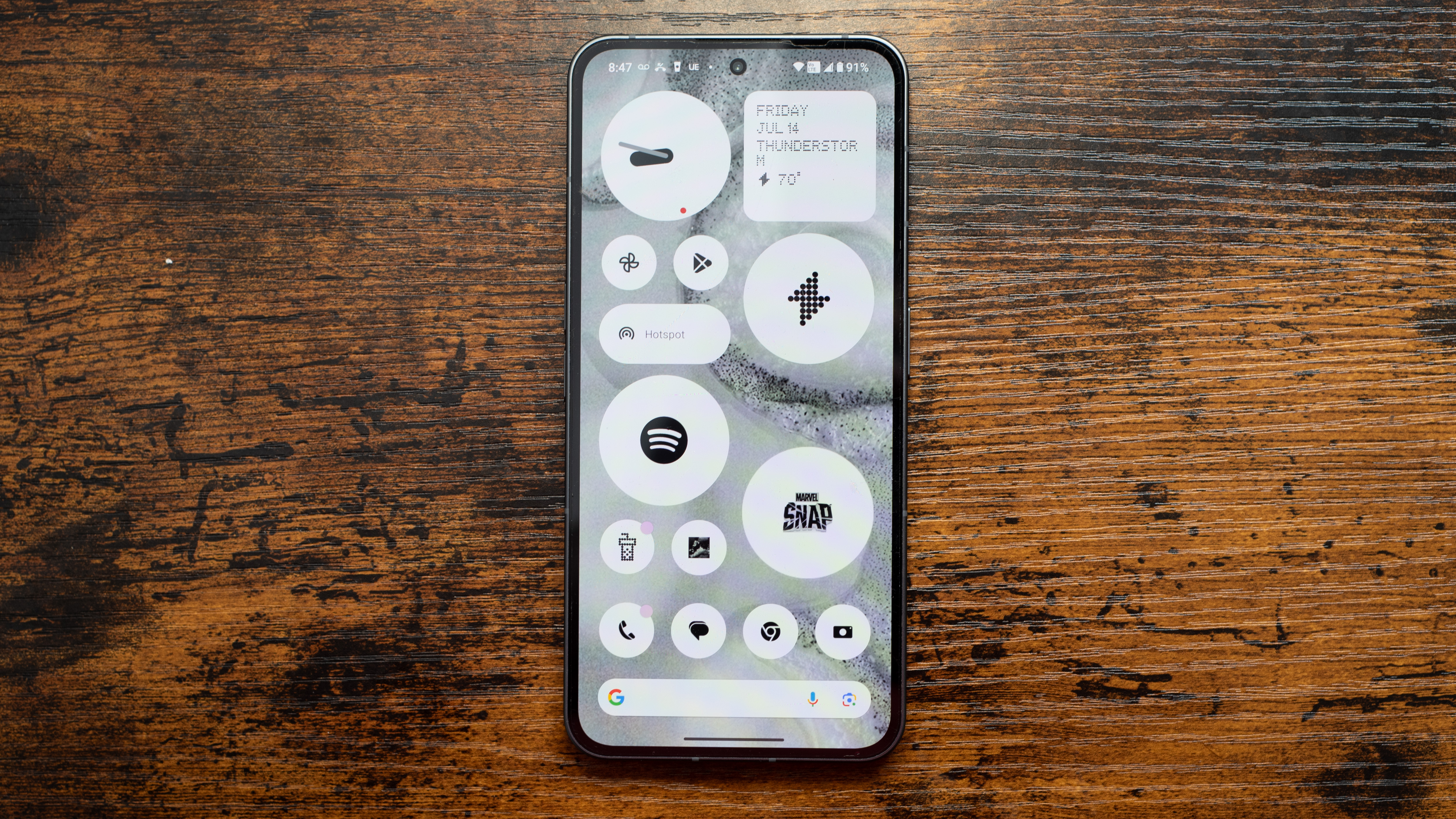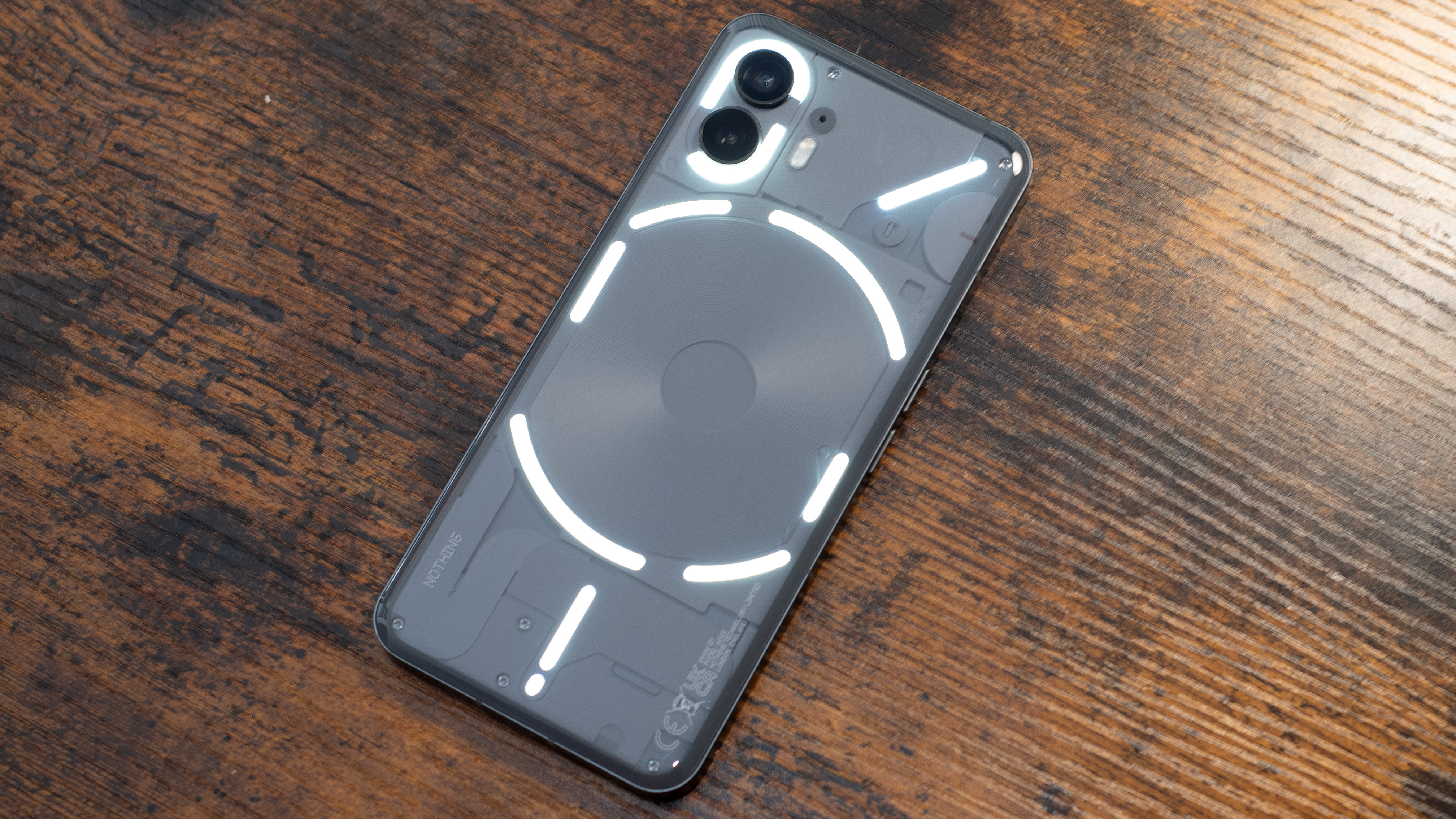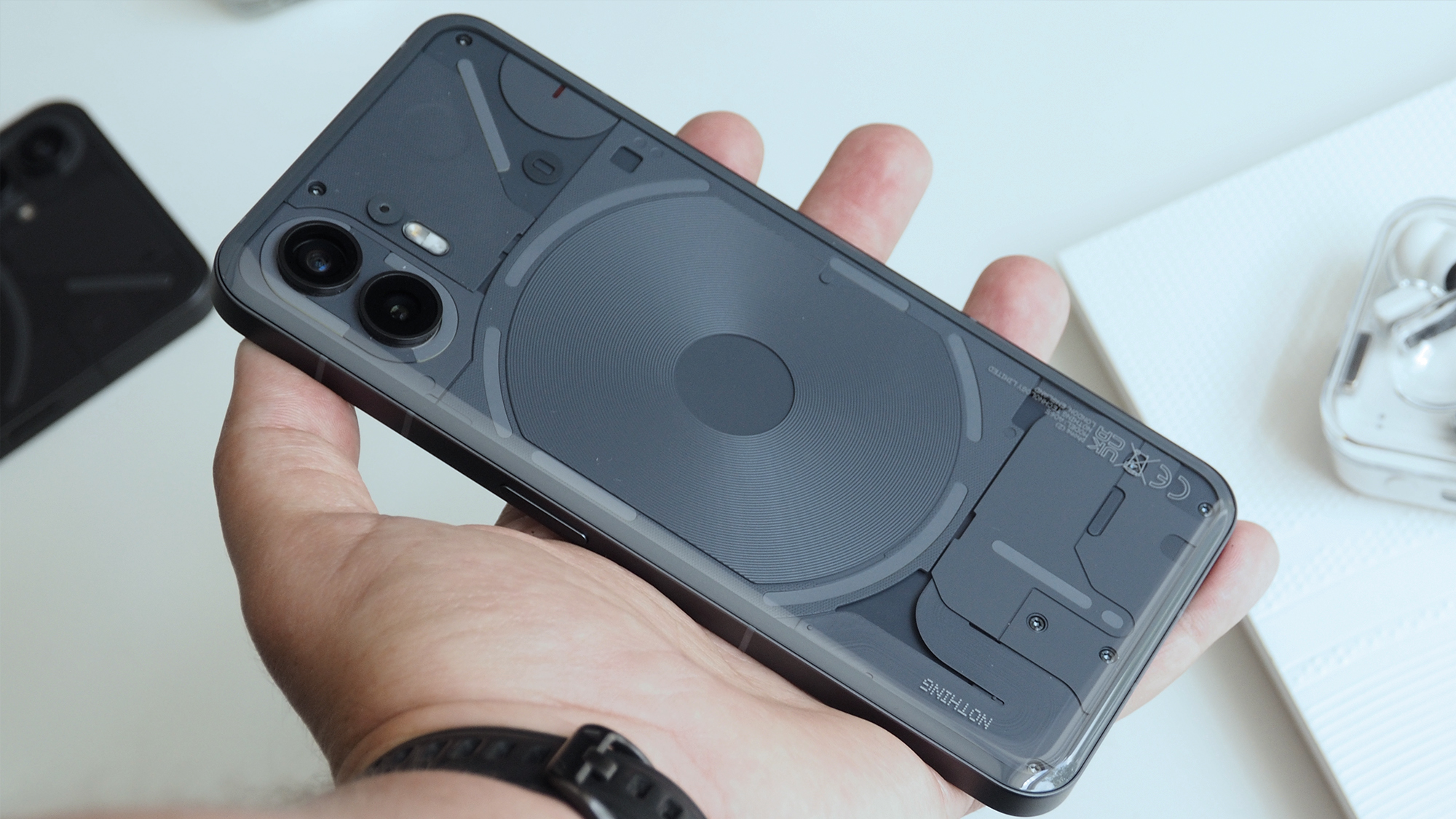Nothing Phone 3: what we want to see
We want a lot more than nothing

The Nothing brand is just a few years old, yet it’s already making a mark on the smartphone world, with distinctive Android phones that look like nothing else on the market.
The Nothing Phone 2 is the latest flagship from the company, but while it impresses from a design perspective, it’s not a home run in every way. So there’s a lot that we want to see changed and improved for the Nothing Phone 3.
You’ll find a list of the key things we want from the Nothing Phone 3 further down, but first, here’s a look at the hinted release date and confirmed price of the phone, along with leaks and speculation about its specs and features.
Cut to the chase
- What is it? The next affordable flagship phone from Nothing
- When is it out? July
- How much will it cost? Around £800 (roughly $1,065 / AU$1,645)
Nothing Phone 3: predicted release date and price

The Nothing Phone 2 was announced on July 11 of 2023, and the Nothing Phone 1 was unveiled on July 12 of 2022.
So based on that it was always very likely that the Nothing Phone 3 would be announced this July, and now Nothing has confirmed that it will indeed land in July.
More specifically it will probably be revealed around the middle of the month based on past form. Our best guess is July 9, as that would be the Tuesday of the second full week in the month, which would line up with when the previous two models were announced. That said, a leak suggests the Nothing Phone 3 will instead land on July 1.
As for the price, Nothing has confirmed that the Nothing Phone 3 will cost around £800. That's roughly $1,065 / AU$1,645, but based on previous regional pricing we'd expect the price to be more like $800 / AU$1,350.
Sign up for breaking news, reviews, opinion, top tech deals, and more.
Indeed, a US pricing leak puts the starting price of the Nothing Phone 3 at $799 (for 256GB of storage and 12GB of RAM), rising to $899 for 512GB / 16GB.
That's a lot more than the Nothing Phone 2, which starts at $599 / £579 / AU$1,049.
Nothing Phone 3: news and leaks
Nothing has revealed that the Phone 3 will be the company's first true flagship phone, with “premium materials, major performance upgrades, and software that really levels things up.” The Nothing Phone 3 is also expected to have lots of AI features, based on a leaked memo.
But despite being positioned as a flagship, the Nothing Phone 3 won't have a flagship chipset, with the company having revealed that it has a mid-range Snapdragon 8s Gen 4.
Beyond that, we had thought the Nothing Phone 3 would retain its glyph lighting system on the back, as this helps the line stand out from rivals. But surprisingly a Nothing Phone 3 teaser suggests this will be absent.
But it might feature a bigger battery than the 4,700mAh Nothing Phone 2 and smaller bezels, given that even the lower end Nothing Phone 2a sports these upgrades.
We've also seen the Nothing Phone 3a and Nothing Phone 3a Pro launch, and these have added telephoto cameras to the mix, so we'll almost certainly see a telephoto on the Nothing Phone 3 as well.
As for leaks, one of the main Nothing Phone 3 specs leaks so far points to the Nothing Phone 3 having a triple-lens camera including a periscope lens, and a battery that might exceed 5,000mAh.
A more recent Nothing Phone 3 leak lists a 6.7-inch 1.5k OLED screen, a 50MP triple-lens camera (including wide, ultra-wide, and 3x zoom lenses), a 50MP front-facing camera, a 5,150mAh battery with 100W charging, and wireless charging.
We've also heard the Nothing Phone 3 could come with a choice of 12GB or 16GB of RAM, 256GB or 512GB of storage, and a black or white shade.
Nothing Phone 3: what we want to see
There are loads of ways the Nothing Phone 3 could improve on the Nothing Phone 2, and we hope to see the following:
1. More water resistance

The Nothing Phone 2 does have some water resistance, but with an IP54 rating it’s only certified to survive a splash. We want reassurance that the Nothing Phone 3 can withstand heavy rain and ideally even submersion in water, so we’d like to see the IP rating boosted to IP68.
That would give us this reassurance, and put its water resistance in line with rivals like the Google Pixel 8.
2. Improved cameras
One of our biggest complaints in our Nothing Phone 2 review was with the cameras, with our reviewer finding that they “can’t handle dynamic lighting and lack the detail and quality of rival phones.”
They’re a real weak link then, and in desperate need of improvement. Ideally we’d like to see a third lens added for telephoto shots too, and that now seems likely since the Nothing Phone 3a has a telephoto, but the priority should be improving the existing main and ultra-wide cameras.
3. Better use of the glyph lights

Our Nothing Phone 2 review also found that the glyph lighting on the phone was underused, as few apps make use of it.
This problem might be hard to solve if it requires collaboration with the developers of those apps, but it leaves the lighting system feeling more like a pretty gimmick than something that’s particularly useful. So we hope to see big improvements to the feature on the Nothing Phone 3.
4. More Android version updates
Google and Samsung have promised seven years of Android updates on their latest flagship phones, and while we don’t expect Nothing to match that, especially as its phones are cheaper, we would like to see an improvement on the three years promised for the Nothing Phone 2.
Extending the support promise to five years for the Nothing Phone 3 would be great to see.
5. A less slippery design

While we’re largely fond of the Nothing Phone 2’s design, one less appealing aspect is the rounded glass back, which while attractive is also prone to slipping off surfaces.
Of course, you can always lay it with the screen downwards, and that’s probably what Nothing wants you to do since that way you can see the glyph lighting. But we’d like for the Nothing Phone 3 to at least provide the option of resting it with the screen upwards, without risking a fall.
6. A bigger battery
The Nothing Phone 2 has a 4,700mAh battery, and while its stamina is reasonable – delivering more than a day of life on average – that’s not a particularly large capacity given its big 6.7-inch screen.
Given that the Nothing Phone 2a with a screen of the same size manages to squeeze in a 5,000mAh battery we’d like to see the same from the Nothing Phone 3.
You might also like
- Nothing Phone 2 review: exactly what it looks like, flashy and new
- Best Android phones: top Google-powered phones for every budget
- Best cheap phones: top budget smartphones in the US
James is a freelance phones, tablets and wearables writer and sub-editor at TechRadar. He has a love for everything ‘smart’, from watches to lights, and can often be found arguing with AI assistants or drowning in the latest apps. James also contributes to 3G.co.uk, 4G.co.uk and 5G.co.uk and has written for T3, Digital Camera World, Clarity Media and others, with work on the web, in print and on TV.
You must confirm your public display name before commenting
Please logout and then login again, you will then be prompted to enter your display name.